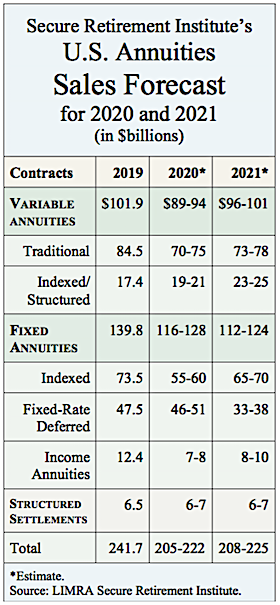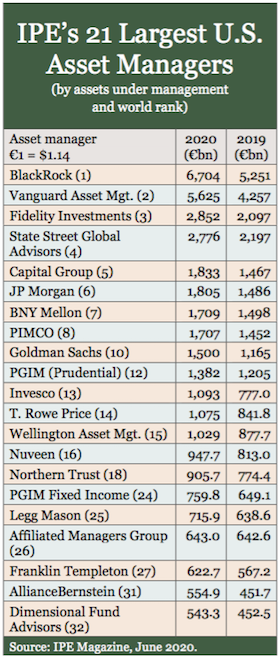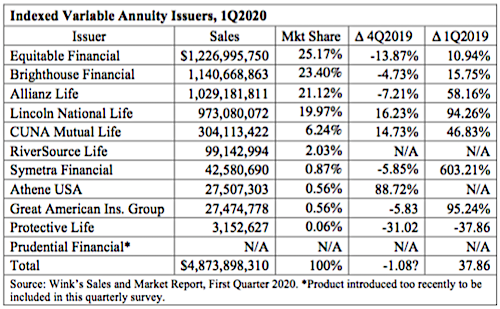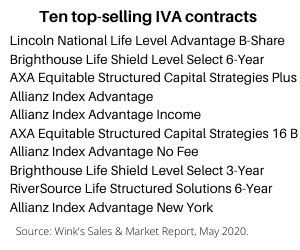
Hear the ‘Stones on iHeartRadio, courtesy of Alliance for Lifetime Income
As the sole sponsor of the 2020 Rolling Stones “No Filter” tour, which was postponed due to COVID-19, the Alliance for Lifetime Income, which educates the public about annuities, has created an alternate way to experience the Stones.
Fans can listen to Rolling Stones music via the “iHeartRadio Stones No Filter Radio Tour.”
The six-city on-air tour on iHeartRadio’s Rock and Classic Rock stations will showcase an hour-long special of Rolling Stones music hits, interviews with the band, live recordings from past concerts, and an interview with the Rolling Stones tour production director, Dale “Opie” Skjerseth.
The events will be broadcast on local stations in Charlotte, Dallas, Detroit, Minneapolis, Pittsburgh and St. Louis, as well live-streamed on www.iheart.com and the iHeartRadio app. The series will be aired live on Friday nights from 9:00-10:00PM local time for six consecutive weeks, starting June 26. All six cities were part of the original 2020 “No Filter” U.S. tour, planned for May 8–July 9.
The stations hosting the radio concerts are as follows:
- June 26 – St. Louis – KLOU 103.3
- July 3 – Detroit – WLLZ 106.7
- July 10 – Minneapolis – KQQL 107.9 (KOOL 108)
- July 17 – Charlotte – WRFX 99.7
- July 24 – Dallas – KZPS 92.5
- July 31 – Pittsburgh – WDVE 102.5
iHeartRadio is also committing financial support on behalf of the Alliance to Feeding America food banks in the six tour cities.
The Alliance is a non-profit consumer education organization. It raises awareness and educates Americans about the need for protected lifetime income to cover basic expenses in retirement.
2020 was the second consecutive year that the Alliance was the sole sponsor of the Rolling Stones U.S. tour. In 2019, the Alliance said it reached 1.5 million concertgoers and 24 million social media followers with its education efforts.
Higher reserve requirements hurt life/annuity companies in 1Q2020
The U.S. life/annuity (L/A) industry posted a $23.1 billion net income loss in the first quarter of 2020, driven mainly by a 51% increase in expenses over the same prior-year period.
These preliminary financial results are detailed in a new Best’s Special Report, titled, “First Look – Three Month 2020 Life/Annuity Financial Results,” and the data is derived from companies’ three-month 2020 interim period statutory statements that were received by June 2, representing an estimated 91% of total industry premiums and annuity considerations.
According to the report, the L/A industry saw a $23.7 billion increase in total income to $230.4 billion for the period. However, a $94.1 billion increase in total expenses, mainly due to a combined $57.3 billion year-over-year increase in aggregate reserves for life and accident and health contracts at Prudential, Brighthouse, Jackson National, AXA Equitable and Transamerica, negated the rise in total income.
The growth in expenses led to the L/A industry reporting a net pretax operating loss of $50.1 billion, its first since 2008. A tax benefit of $8.5 billion and a $22.0 billion increase in net realized capital gains reduced the impact, resulting in the total industry net loss of $23.1 billion. Despite the net loss, capital and surplus for the industry remained flat from the end of 2019 at $405.4 billion, aided by a $17.9 billion change in unrealized gains and a $6.9 billion increase in asset valuation reserve.
AIG adds factor-based global index to its indexed annuity contracts
AIG Life & Retirement, a division of American International Group, Inc., will begin offering the new AQR DynamiQ Allocation Index as a crediting strategy option in AIG’s Power Protector Series of Index Annuities, according to an AIG release this week.
The multi-style index has been designed by AQR Indices, LLC, a subsidiary of AQR Capital Management, LLC. It is the first AQR index built for use in an indexed annuity, the release said.
The AQR DynamiQ Allocation Index dynamically allocates across global equity and fixed income markets. The index uses AQR’s style-based (factor) methodology to identify assets for a variety of market environments.
The AQR DynamiQ Allocation Index is not available for direct investment, only to help determine the interest earned in the index annuity. Assets allocated to the index annuity are protected against market downturns, so consumers never lose principal or any interest earned due to market volatility.
AQR’s index methodology is based on research into styles, or factors, that drive an asset’s performance, the AIG release said. The AQR DynamiQ Allocation Index is designed to boost performance potential while managing downside risk by combining five styles:
- Value (cheap assets)
- Momentum (assets that show positive long-term performance)
- Carry (higher-yielding fixed income assets)
- Defensive (higher quality, lower risk equities)
- Trend (assets that show positive short-term performance)
These styles are dynamically allocated across asset classes and geographic regions on a monthly basis based on a systematic, rules-based process that seeks to take advantage of changing market conditions, the release said.
The AQR DynamiQ Allocation Index is available exclusively in the Power Protector Series of Index Annuities, which is issued by American General Life Insurance Company and distributed primarily through independent marketing organizations.
TruChoice advisers get access to Envestnet Insurance Exchange
TruChoice Financial Group, LLC, a distributor of insurance products to investment advisors, registered representatives, and insurance agents, has arranged for its advisers to use the Envestnet Insurance Exchange, allowing them to hold annuities and insurance alongside managed accounts.
To implement the partnership, TruChoice will work with Fiduciary Exchange LLC (FIDx), the fintech that powers the Exchange. TruChoice advisers can now generate proposals, do research, open insurance policies, manage in-force transactions, and create client reports without leaving the Envestnet platform.
The Envestnet Insurance Exchange connects the brokerage, insurance, and advisory ecosystems, and provides management of annuity solutions from pre- to post-issuance. Investment advisors and registered representatives utilizing TruChoice can seamlessly plan, research, generate proposals, open policies, manage in-force transactions, and create client reports within the Envestnet platform.
Minneapolis-based TruChoice was established in early 2018 as an umbrella for its four founding firms—American Financial, Ann Arbor Annuity Exchange, GamePlan Financial Marketing, and The Annuity Store. These four organizations wholesale fixed-income annuities, life insurance, and long-term care insurance. In 2018, their advisers sold over $2.85 billion in fixed-income annuity business and $25 million in life insurance business.
The Envestnet Insurance Exchange supports a wide range of commission- and fee-based annuities from AIG Life & Retirement, Allianz Life, Brighthouse Financial, Global Atlantic Financial Group, Jackson National Life Insurance Co., Nationwide, Prudential Financial, and Transamerica.
Troubled muni bonds weigh on insurers: AM Best
Given the severe medium-term impacts on the municipal bond markets driven by the pandemic, according to a new AM Best special report.
The significant decline in revenue of states and cities during the COVID-19 pandemic likely will affect municipal bondholders, according to a recent Best’s Special Report, “Severe Test for the Municipal Bond Market.”
The report describes insurers’ muni exposures as “significant.” “U.S. insurance companies with more significant exposures, particularly revenue bonds for the more vulnerable sectors such as transportation and retail, are more likely to feel the negative market effects,” a release from A.M. Best said.
More than two-thirds of the municipal bonds held by insurers are from New York, New Jersey, Illinois, Massachusetts, California, and others hit hard the pandemic.
Of the three major insurance segments, property/casualty insurers have the greatest municipal bond exposure, although it has decreased by 20% since 2016, when the Tax Cuts and Jobs Act made the tax-exempt status of this asset class less advantageous.
Nevertheless, the segment’s exposures remain considerable, as municipal bonds constitute nearly 14% of the property/casualty segment’s invested assets, compared with 12% and 4.1% for the health and life/annuity segments, respectively.
The life/annuity segment’s municipal bond exposures represent 42% of their capital and surplus, exceeding that of other two segments. Companies rated by AM Best account for nearly 90% of the insurance industry’s municipal bond holdings.
Given their relative value and tax-exempt characteristics, municipal bonds will continue to play a role in an insurer’s strategic asset allocation. However, selecting appropriate exposures will be critical to insurers’ ability to manage through this tumultuous cycle. “The expertise and risk management practices of insurers and their investment managers will be tested,” said Jason Hopper, associate director, industry research and analytics. “Insurers that have a deep understanding of the municipal bond markets and well-defined risk thresholds based on solid credit risk fundamentals will perform better during and after the pandemic crisis.”
All asset classes have been affected by the pandemic, providing yet another illustration of rising correlations during times of stress. AM Best will continue to monitor the overall impact of deteriorating conditions on insurers’ ability to maintain adequate capital appropriate for their business and investment risks.
Owners of self-directed retirement accounts holding more cash: Schwab
The average account balance of self-directed brokerage accounts (SBDAs) held by retirement plan participants was $252,675 at the end of 1Q2020, down 6% from 1Q2019 and 14% from 4Q2019, according to Charles Schwab’s latest SDBA Indicators report.
SDBAs are brokerage accounts within retirement plans, including 401(k)s and other types of retirement plans, that participants can use to invest retirement savings in stocks, bonds, exchange-traded funds, mutual funds and other securities that are not part of their retirement plan’s core investment offerings.
The first quarter SDBA Indicators Report also showed Trading volumes increased in the first quarter of 2020 compared with the previous quarter, with an average of 13 trades per account, up from seven in Q4 2019. These trends matched trends in broader investor activity during the turbulent first quarter of 2020.
Asset allocations remained similar to last quarter, with the exception of an increase Cash holdings rose to 19% in 1Q2020 from 12% in 4Q2019. Mutual funds continue to represent 34% of participant assets (34%), followed by equities (27%), cash (19%), ETFs (17%), and fixed income (3%).
Allocation trends
Mutual funds: Large-cap funds had about 30% of all mutual fund allocations, followed by taxable bond (22%) and international (14%) funds.
Equities: Information technology remained the largest equity sector holdings at 29%, up from 27% last quarter. Apple (AAPL) continues to be the top overall equity holding, comprising 11% of the equity allocation of portfolios.
The other equity holdings in the top five include Amazon (AMZN) (6.5%), Microsoft (MSFT) (3.6%), Berkshire Hathaway (BRKA) (2.5%), and Tesla (TSLA) (2.1%).
ETFs: Among ETFs, investors allocated the most dollars to U.S. equity (48%), followed by U.S. fixed income (18%), international equity (13%) and sector ETFs (10%).
Report highlights
On average, participants held 10 positions in their SDBAs at the end of Q1 2020, which has remained steady both year-over-year and quarter-over-quarter. Gen X made up approximately 43% of SDBA participants, followed by Baby Boomers (37%) and Millennials (14%).
Baby Boomers had the highest SDBA balances at an average of $367,425, followed by Gen X at $199,071 and Millennials at $65,207. Gen X had the most advised accounts at 45%, followed by Baby Boomers (41%) and Millennials (11%).
‘Schwab Stock Slices’ now available
Schwab also announced that its new Schwab Stock Slices service is now available in the Schwab Personal Choice Retirement Account, the firm’s SDBA offering. The service lets investors own any of America’s leading companies in the S&P 500 for as little as $5 each, even if their shares cost more. Investors can use the new service to purchase a single stock slice or up to 10 different Stock Slices at once, and they can hold slices of as many S&P 500 companies in their account as they wish through multiple purchases. Schwab Stock Slices are purchased commission-free online, just like regular stock trades at Schwab.
The SDBA Indicators Report includes data collected from approximately About 145,000 retirement plan participants with balances between $5,000 and $10 million in their Schwab Personal Choice Retirement Account were surveyed for the latest SDBA Indicators Report. Schwab extracts data quarterly from all accounts that are open as of quarter-end and meet the balance criteria.
Empower on path to implementing SEC’s ‘Reg BI’
With the Securities and Exchange Commission’s (SEC) Regulation Best Interest set to take effect June 30, Empower Retirement will continue to act as a fiduciary for its client retirement plans, the Denver-based full-service retirement plan provider said this week.
Empower serves approximately 9.6 million individuals through defined contribution retirement plans, Individual Retirement Accounts and retail brokerage accounts.
In a release, Empower said it “will continue to expand the scope of its field representative service model so that individual retirement plan participants can discuss investment strategies with their Empower representative.”
“Reg. BI,” as the new SEC rule is known, requires broker-dealers and their registered representatives to act in the best interest of their retail customers, including both plan participants and IRA owners, when recommending securities and investment strategies, including rollovers and account-type recommendations.
The regulation is designed to ensure that broker-dealers and their registered representatives act under a higher standard of care when making such recommendations to everyday investors..
Investment advice provided to participants in retirement plans that are subject to the Employee Retirement Income Security Act (ERISA) must satisfy ERISA’s fiduciary conduct standards. Empower representatives offer fiduciary investment advice designed to meet ERISA’s standards, to participants in both ERISA and non-ERISA plans.
Reg. BI applies to investment recommendations made to retirement plan participants in 401(k), 403(b) and 457 plans, among others, as well as IRA owners and retail brokerage customers. It does not apply to interactions with plan sponsors or plan advisors and representatives.
Empower will continue to provide investment education to those plans that have not authorized Empower’s advice service, and those participants and retail customers who are interested in making their own investment choices without a recommendation or advice from Empower.
When allowed by the plan sponsor, field representatives of Empower’s registered investment adviser (RIA), provide fiduciary advice to plan participants who seek it. As such, Empower will update disclosure and procedures around client interactions, and its supervisory structure in place through Empower Advisory Services.
Under Reg. BI, broker-dealers will need to diligently collect information to determine if an investment is in the individual’s best interest. The registered representatives of the broker-dealers must disclose to the individual any conflicts of interest they have—such as payments from companies whose products they recommend.
Lincoln expands retirement plan investment options
Lincoln Financial Group is offering a new Multi-Manager solution built on Lincoln Variable Investment Product (LVIP) funds within the Lincoln Director program.
Lincoln Director Multi-Manager gives plan sponsors access to more than 80 LVIP funds with Lincoln Investment Advisors Corp. (LIAC) serving as the investment advisor. LIAC provides unbiased, third-party oversight over the selection of fund managers from a stable of experienced sub-advisory firms to provide day-to-day portfolio construction. Financial professionals and their clients can construct their investment lineup from the LVIP fund list, or they can choose to receive 3(38) fiduciary support from Morningstar Investment Management LLC to develop, monitor and update the portfolios on an ongoing basis. In addition, financial professionals have access to Lincoln Financial’s Client Investment Support team.
The Lincoln Director Multi-Manager funds also offer YourPath Multi-Manager collective investment trust (CIT) portfolios. By offering multiple glide path options based on risk tolerance, YourPath CIT portfolios provide a more personalized target-date investment for retirement plan participants. The selection of these portfolios allows plan sponsors to offer participants conservative, moderate and growth glide paths developed by Morningstar Investment Management. Plus, they may be used as a plan’s Qualified Default Investment Alternative (QDIA), Lincoln’s release said.
Troubled muni bonds weigh heavy on insurers: AM Best
Given the severe medium-term impacts on the municipal bond markets driven by the pandemic, according to a new AM Best special report.
The significant decline in revenue of states and cities during the COVID-19 pandemic likely will affect municipal bondholders, according to a recent Best’s Special Report, “Severe Test for the Municipal Bond Market.”
The report describes insurers’ muni exposures as “significant.” “U.S. insurance companies with more significant exposures, particularly revenue bonds for the more vulnerable sectors such as transportation and retail, are more likely to feel the negative market effects,” a release from A.M. Best said.
More than two-thirds of the municipal bonds held by insurers are from New York, New Jersey, Illinois, Massachusetts, California, and others hit hard the pandemic.
Of the three major insurance segments, property/casualty insurers have the greatest municipal bond exposure, although it has decreased by 20% since 2016, when the Tax Cuts and Jobs Act made the tax-exempt status of this asset class less advantageous. Nevertheless, the segment’s exposures remain considerable, as municipal bonds constitute nearly 14% of the property/casualty segment’s invested assets, compared with 12% and 4.1% for the health and life/annuity segments, respectively.
The life/annuity segment’s municipal bond exposures represent 42% of their capital and surplus, exceeding that of other two segments. Companies rated by AM Best account for nearly 90% of the insurance industry’s municipal bond holdings.
Given their relative value and tax-exempt characteristics, municipal bonds will continue to play a role in an insurer’s strategic asset allocation. However, selecting appropriate exposures will be critical to insurers’ ability to manage through this tumultuous cycle. “The expertise and risk management practices of insurers and their investment managers will be tested,” said Jason Hopper, associate director, industry research and analytics. “Insurers that have a deep understanding of the municipal bond markets and well-defined risk thresholds based on solid credit risk fundamentals will perform better during and after the pandemic crisis.”
All asset classes have been affected by the pandemic, providing yet another illustration of rising correlations during times of stress. AM Best will continue to monitor the overall impact of deteriorating conditions on insurers’ ability to maintain adequate capital appropriate for their business and investment risks.
Emory University 403(b) fee suit moves toward settlement
A preliminary settlement approval motion on behalf of Emory University employees and retirees in their suit against the university involving their 403(b) retirement plan has been filed by their counsel, Schlichter Bogard & Denton, the St. Louis-based scourge of retirement plan sponsors and service providers.
The complaint, Henderson, et al., v. Emory University, et al., was originally filed in the U.S. District Court in the Northern District of Georgia in Atlanta in August 2016. The plaintiffs sued for alleged breach of fiduciary duty under the Employee Retirement Income Security Act (ERISA).
Emory denied it committed any fiduciary breach in its operation of its plan. The settlement creates a $16.75 million settlement fund for the plaintiffs, and non-monetary changes in rules governing the 401(k) plan.
The case was part of a group of cases filed by Schlichter Bogard & Denton, LLP, which is the first law firm ever to sue a university 403(b) plan alleging excessive fees. Schlichter Bogard & Denton, LLP also filed the first cases over excessive fees in 401(k) plans.
The complaint alleged that Emory University breached its duties of loyalty and prudence under ERISA by causing plan participants to pay excessive fees for both administrative and investment services in the plan.
Besides the financial compensation, Emory agreed:
- To conduct a Request for Proposals for bids on recordkeeping fees;
- To prohibit the recordkeeper from using confidential information obtained from Emory employees and retirees to market IRA’s, insurance, and wealth management services
- To hire an independent consultant to make recommendations regarding plan investments
- To inform plan participants of changes in plan structure.
According to the motion, Schlichter Bogard & Denton, LLP will monitor Emory’s compliance with the terms of the settlement for three years.
© 2020 RIJ Publishing LLC. All rights reserved.



















